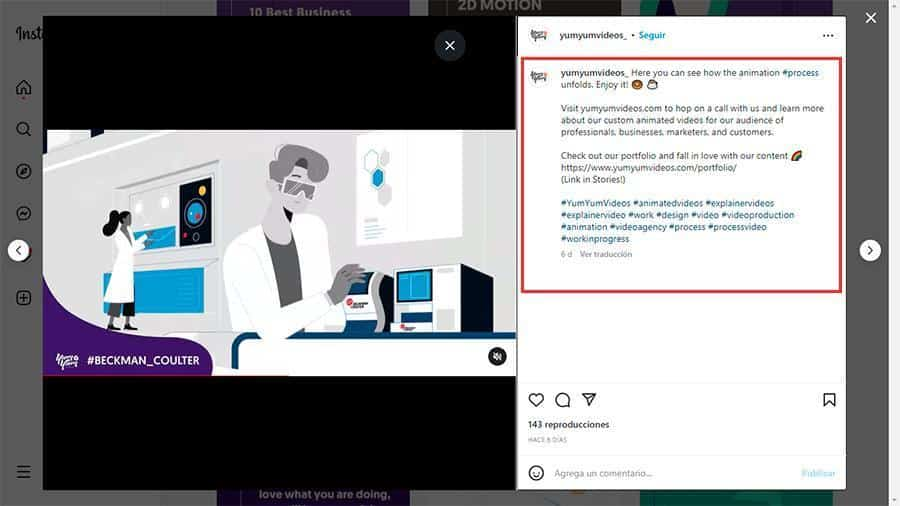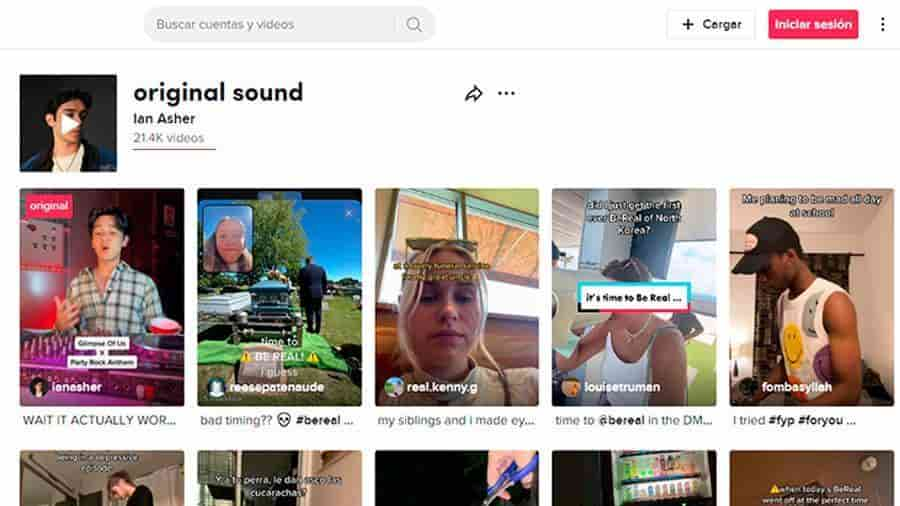How to Improve Your Social Video Engagement
A solid presence on social media can make the difference between being remembered or outright ignored online. However, competition is growing every day, as more brands leverage the benefits of social media and even regular users start creating content just to boost their follower base.
So, if you want to be seen by your target audience, you must stand out in a sea of publications.
Luckily, video content provides one of the most effective ways to do just that and enhance your online presence. But you may have already found that just making videos may not be enough.
On platforms like Instagram, even if you’re planning your video strategy and producing high-quality pieces, most of your potential audience won’t see your posts if they don’t generate engagement from those who do see them.
In short, if you want to increase your video’s reach, you must improve your engagement rates.
To help you with that, we’ll go over six key factors that can affect your video’s engagement rates on social media and how you can optimize them to improve your overall online presence.
1. Learn what your viewers like
If you provide the right type of content to the right audience, the chances that viewers will engage with your videos grow exponentially. But what does the “right” audience means?
A hundred followers who interact with you and your content regularly are far more valuable than a thousand who do not. If you tailor-make videos for people who care about what you’re saying, they’ll be far more likely to like and share them.
In order to do that, though, you need to understand how your viewers act on social media and build engagement profiles about what they like, how they talk, and what they value. The best part? There are already plenty of social listening tools and profile metrics that can give you reliable data you can convert into reliable intel for your strategy.
By breaking down your audience this way, you’ll have an easier time figuring out the topics they’re interested in. And that, in turn, will help you determine the types of videos they’re more likely to interact with and even the social media platforms you should focus your efforts on.
Once you understand what your audience likes through reliable data, you’ll be better equipped to determine the type of language, tone, and resources that resonate with them.
Use these insights in your videos to create content they’ll be far more likely to watch, like, share, and contribute to your inbound marketing strategy.
2. Build relationships with your audience
People online prefer to engage more with brands and personalities they feel connected to. Users on social media, in particular, place a lot of value on reputation.
For them, a brand they know and have been following for a long time is validated, and they trust it over new and unfamiliar accounts — which means they are far more likely to pay attention to them.
Luckily, social media is a great place to build relationships with your followers. Users there are already looking to connect with brands, so you just need to show a bit more of a personal side of yourself and your brand.
The 80-20 rule for social media and content marketing says that 80% of your content should be information valuable for your viewers, and only 20% can be focused on selling.
Following that logic, to build connections with your followers, most of your videos should be conversational and offer clear value. Here are some tips to help:
- Produce videos that will help you solidify your relationship with your followers.
- Read comments regularly, and make sure to answer them promptly whenever possible.
- Interact with your community. By being attentive, you communicate that you care about their opinions and wants.
That said, do keep in mind that relationships aren’t made once; they’re built continuously. The same happens on social media. Every time you publish, you’re redefining and strengthening the relationships with your followers.
Make sure most of your content showcases your brand in a way that connects with viewers on a personal level and touches upon their wishes and wants. Once they trust you and feel connected with you, they’ll interact more.
3. Optimize videos for your chosen platform
Here’s a common social media problem many accounts looking to grow have faced. Imagine you upload a video, and it’s a hit: thousands of comments, likes, and shares. Then you decide to replicate it by uploading your video to other places. But it doesn’t work out nearly as well over there.
Different social media platforms allow and require different types of content, be it in terms of length, technical specs, or the topics you tackle. Moreover, their audiences have different expectations and preferences as well.
Your content engagement rates will suffer if your videos aren’t properly optimized and tweaked to fit each platform’s requirements.
On sites like Instagram and TikTok, where content is ranked based on how users react to it, failing to do so will make your engagement rates drop. Conversely, content that is easy to watch and generates higher engagement rates will be prioritized by most sites’ recommendation algorithms, increasing your video’s organic reach and the chances of reaching a far larger audience than your existing subscriber list.
Let’s take native videos as an example. These are videos you upload directly to a social media platform instead of using external links from other sites, like YouTube, to share them.
Native video uploads tend to have better engagement rates across the board.
The reason why is that, on social platforms like Facebook, native videos have features that nurture engagement — stuff like native uploads that start to play automatically as you scroll, while external videos need to be manually started.
Also, native videos play inside the platform’s own environment, while a video shared through a link often opens a new tab, which causes users to leave the platform in order to watch the video. This means that each social platform has a vested interest in providing incentives for native uploads, which leads to higher performance and engagement rates.
Research the different demands for videos’ specs across platforms, including the correct dimensions, orientation, video length limit, and other essential features. Try to optimize and re-upload a tailored version of your content in each of them whenever possible.
4. Never underestimate the power of good copy
Research on video content shows that a minute of video is worth 1.8 million words, but that doesn’t mean you should forget about the text surrounding your video uploads either!
Great descriptions and titles for your videos help you reach viewers interested in your content and willing to interact by using the right keywords. Effective copywriting can also capture a user’s attention for longer, entice them to watch more of your video content, and even inspire them to take action.
There are many ways you can use descriptions:
- Feature the main benefit the audience will receive
- Use questions to pique the audience’s curiosity
- Mention how the video will provide value to the viewer
- Add further information on the topic
Another important aspect of social media uploads copy is hashtags, which can help you reach audiences interested in the topics you cover in your video content —if you choose the right ones, that is.
Forget about generic hashtags, which won’t be useful since you face competition from millions of creators. It’s better to use specific hashtags closely tied to your video’s purpose or industry to reach people that’d actually care to watch and engage with the piece.
Hashtags can be used as search engine fuel on some social media platforms, such as Instagram and Twitter. Users can search and filter content based on hashtags. Keep the most important ones stable throughout all your social videos, and work on positioning your content in the best spots.
Think of video descriptions as a bridge you can use to connect with your audience. Urge your viewers to watch and interact with your videos, and add hashtags that will allow you to reach the audiences you want. You won’t be disappointed with the results.
5. Short videos help boost performance and interactions
People nowadays don’t have much time or patience on their hands. And when it comes to online interactions, most people don’t want to spend the time they do have on their smartphones watching brands and personalities talking themselves up on social media.
Social platforms have adapted themselves to these circumstances, and now the ideal social videos have to be short. Algorithms may vary according to user preferences between social channels, but at least we know this: you need to keep your videos concise while providing value wherever you decide to upload.
Try to focus on one single objective you’re trying to achieve with your video. Ask yourself what you want viewers to gain from it, and focus only on how to achieve that in your piece.
If the topic you want to tackle is too complicated and requires extensive explanation, you can divide it into smaller pieces of content. Instead of putting all the information in one lengthy video, think about creating a series discussing various aspects.
Making shorter videos for social media has become fundamental in order not to bore your audience and lose views. Your engagement rates will be better, not only because the platform’s algorithm favors short content but also because your viewers will enjoy it and interact with it more.
6. Try to go for a broad appeal
One of the main advantages of social media is the chance of virality. If your video goes viral within moments of publication, you can get thousands of comments, likes, and shares, which in turn multiplies your chances of that piece being recommended to more people and bringing new eyes to your online presence.
Now, there’s no perfect formula for making viral videos, but there are characteristics that most viral content shares.
Viral videos are based on universal appeal, which means that most viewers should be able to relate to your message or address a situation that many people have experienced. Keep an eye on the current social or cultural climate and create videos around topics that everyone has been talking about lately.
Another good piece of advice is to use trending sounds. With TikTok, for example, your videos can get tons of new impressions and shares just by using some of the top trending sounds. Save the sound if you’re scrolling through Reels or TikTok and see a popular video.
The power of video lies in allowing your content to reach thousands of new users in a short period of time.
Create current, pertinent videos to help you stay ahead of the competition and get more views. By building on the excitement of an existing trend, you can gain exposure while also showcasing the personality and benefits of your brand.
Parting thoughts
Improving your engagement is critical to build your presence online. After all, the digital landscape was built to connect people and improve communications.
To achieve this, making great-quality videos is important. But if nobody’s really hitting play and paying attention, there are many other things to improve.
Engagement rates on social media are affected by several different factors. Once you decipher them and start making content that meets those criteria, you’ll see those engagement metrics ticking up!
Tags: Business Reputation Marketing, SEO, Social Media Marketing.





